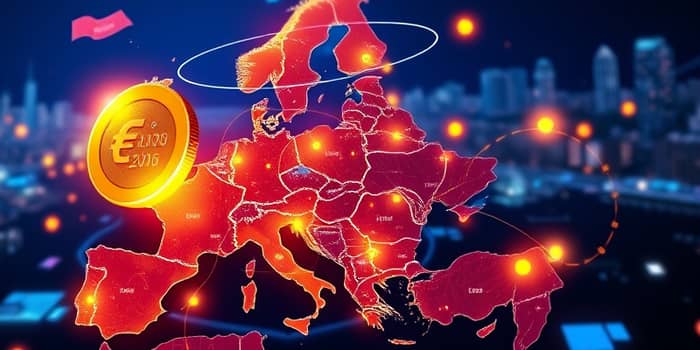
In an era marked by rapid digital innovation, the European Central Bank’s initiative to introduce a digital euro promises to redefine how we transact, both at home and across borders. This article explores its potential to drive efficiency, foster sovereignty, and shape the global payments landscape.
The digital euro is envisioned as a central bank digital currency (CBDC) issued by the European Central Bank (ECB). It will serve as a digital complement to cash, with each unit holding the same legal value as a physical euro coin. Accessible to citizens, businesses, and public authorities, it aims to guarantee universal acceptance and free basic transactions.
After completing its investigation phase in 2023, the project entered an intensive preparation stage, with legislative debates expected through 2026. Optimistic projections suggest potential issuance by 2027–2028, pending final regulatory approval.
Europe’s payments ecosystem faces growing reliance on non-European providers, especially US-based card networks and emerging private digital currencies. The digital euro emerges as a strategic countermeasure to preserve monetary sovereignty in a digital world.
By fostering a unified European payments infrastructure, the digital euro could overcome the fragmentation that has hindered past initiatives like the European Payments Initiative (EPI). It also promises enhanced resilience, with offline capabilities ensuring continuity during network outages or connectivity disruptions.
The digital euro is designed to blend familiarity with cutting-edge technology:
Privacy and security are foundational. Users will benefit from cash-like privacy for offline transactions, as the ECB will be unable to identify individuals based on routine payment data. At the same time, robust anti-money laundering (AML) and know-your-customer (KYC) frameworks will ensure compliance.
For everyday consumers and businesses, the digital euro promises smoother, more inclusive payment experiences. Merchants will gain from reduced transaction fees and faster settlements. Citizens in underserved or rural areas will enjoy reliable offline payment options, bridging the digital divide.
Public authorities can streamline benefit distributions and tax collections, reducing administrative burdens. Financial inclusion efforts will be strengthened as digital wallets become widely available without imposing additional costs for basic use.
Today’s international transfers are often slow, opaque, and expensive. Exchange rate margins can exceed 2% for businesses, and smaller remittances may carry fees up to 4%. Manual data entry and regulatory discrepancies account for nearly half of all payment delays.
The digital euro is poised to deliver a profound shift:
By standardizing protocols across the euro area, businesses will enjoy smoother cash flows and predictable costs, while regulatory authorities can monitor flows in real time.
On the international stage, the digital euro could challenge the dominance of dollar-based networks, offering an alternative grounded in European values and standards. Projects like mBridge have already demonstrated the feasibility of multi-CBDC platforms for cross-border exchanges.
Interoperability with other digital currencies and potential integration with the IMF’s Special Drawing Rights (SDR) framework could further elevate the euro’s global influence, supporting reduce reliance on non-European systems and advancing strategic autonomy.
The road to full-scale issuance is complex. Technical hurdles, political negotiations, and the inertia of legacy systems present formidable obstacles. Initial holding limits may constrain utility, and striking the right balance between user privacy and AML obligations remains an ongoing debate.
Ensuring equitable access for non-resident users, fostering fintech innovation, and deepening cross-border interoperability will require concerted policy efforts and public-private collaboration.
As the digital euro moves closer to reality, stakeholders can take proactive measures:
Organizations that position themselves early to leverage programmable money and real-time settlement will gain a competitive edge, improving liquidity management and reducing operational frictions.
With the digital euro’s pilot phase concluding soon and legislative votes on the horizon, Europe stands at a pivotal juncture. If executed effectively, the digital euro will not only modernize domestic payments but also forge a path toward a more efficient, transparent, and equitable global payments system.
By embracing innovation while safeguarding core democratic values, the euro area can deliver a currency fit for the digital age, strengthening its financial ecosystem and empowering citizens around the world.
References













